Michael Bartlett
Wyatt Bramwell
Warning: This story contains mentions of suicide that may be triggering to some readers.
A Life Gone Too Soon
Wyatt Byron Bramwell had it all: he was a handsome, kind, funny, and smart 18-year-old with so much to offer. He was a beloved son, brother, grandchild, great-grandchild, cousin, and friend. Wyatt was born on a warm, beautiful summer day in Blue Springs, Missouri, on August 19, 2000; he took his life on a very similar beautiful summer day in Pleasant Hill, Missouri, on July 30, 2019.
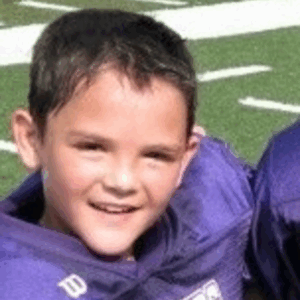
Before his passing, Wyatt graduated summa cum laude from Pleasant Hill High School with a 3.8 GPA and membership in the National Honor Society. A gifted student, he was preparing to attend the University of Missouri College of Engineering. Everyone in our family was immensely proud of all Wyatt’s achievements during his brief 18 years on Earth; the future looked extremely bright. He was not a perfect human being, but pretty ideal for a teenager.

Athletics came naturally to Wyatt, who excelled at every sport he touched. He started playing tackle football with pads and helmets at age eight, focusing on it all the way to high school. His routine was intense but regimented, waking up weekday mornings by himself at 4:30 a.m., working out at the local gym before it was time for class. Wyatt also made sure to complete his course work, maintain a high GPA, and earn academic letters for his studies.

Wyatt missed his sophomore year of playing football due to an injury but supported the team any way he could, including attending practices and games, and recording them on video to watch later. He then made the varsity squad as a junior and senior. A starter and standout on both sides of the ball, he alternated between wide receiver, cornerback, and placeholder. It’s not an understatement to say Wyatt was one of the best on the field and on the team overall. He was a dynamo, a star in the making. Friday nights became “can’t miss” events, centered around Wyatt’s football schedule.
A Sudden Change
Wyatt’s last ever football game was in November of 2018, suddenly deciding to quit the sport after his senior season was over. This came as a surprise to everyone, as his dream was always to eventually play for a Division I university. He never offered a reason why, stating he simply wanted to focus on school. In hindsight, Wyatt had already begun to experience symptoms and suspected he might have CTE, which no one would know until later.
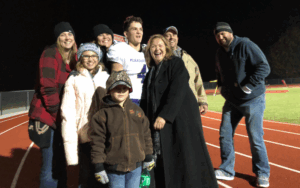
In May of 2019, Wyatt left on a scuba diving trip to Bonaire with his girlfriend and her parents, to celebrate graduating from high school. Upon their return, he demanded a family meeting and admitted he had:
- Received a speeding ticket prior to leaving on vacation
- Smoked marijuana a couple of times
- Been fired for absenteeism from his job at Walmart (and not laid off like he’d originally said)
- Tried to overdose one night (despite repeated urging to provide further details, Wyatt wouldn’t reveal when this occurred or what medication he’d taken)
Then Wyatt informed his parents he no longer wanted their help and was moving out. He relinquished his car, phone, and the expensive 18th birthday watch his parents had given him. For about two months, Wyatt was estranged from his mother and father, despite multiple attempts to communicate and reconcile. He lived for a while with a friend in Pleasant Hill before moving to a family member’s home nearby.
On the afternoon of July 30, 2019, an otherwise beautiful sunny Tuesday, Wyatt borrowed a car to retrieve belongings from a friend’s house. He’d said it was a simple errand and would return shortly. Instead, Wyatt traveled to a secluded area in his hometown and filmed a message on his phone, before taking his life.
In the video, Wyatt admitted to being depressed for a long time, probably since his freshman year. He also confessed to having racing thoughts and hearing voices he referred to as demons. He said, “My head is pretty messed up and damaged,” and that he’d covered it up with sports, video games, and hanging out with friends, but it only got worse over the years.

“I took a lot of hits through football,” said Wyatt. “I took a lot of concussions, and a lot of times I never told anybody about how I was feeling in my head after a hit, I just kind of kept playing which was not smart on my end. I know that.”
Wyatt also specifically requested his brain be donated for study, saying, “I feel like it’ll be closure for me and it’ll be closure for you guys to know that maybe I suffered from brain damage, maybe that was the reason.”
Bringing Meaning to Loss
Despite their overwhelming confusion and profound grief in the moment, Wyatt’s parents, Bill and Christie, were able to contact the UNITE Brain Bank and donate Wyatt’s brain for study, fulfilling his final request. We all nervously awaited the results, not really believing he suffered from CTE. After all, he’d been an excellent and committed student. He was beyond trustworthy, responsible, predictable and easygoing; that is, until his last 57 days, but couldn’t his behavior be attributed to the adolescence of a growing boy?

While Wyatt had played football since age six, he’d never even complained of headaches nor mentioned any concerns about his brain or CTE. He hadn’t displayed the behaviors of hearing demons or voices as he described before his death. All those who loved Wyatt remained confused and in a perpetual state of shock, having to come to terms with a new normal.
In September 2020, Lisa McHale of the BU CTE Center and the Concussion Legacy Foundation arranged a conference call between our family and Dr. Ann McKee to review the study findings. Dr. McKee revealed Wyatt suffered from stage 2 (of 4) CTE, the first teenager and, to date, youngest athlete to have such advanced pathology of the disease.
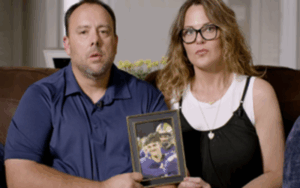
Bill and Christie shared Wyatt’s diagnosis in November 2023, as part of a New York Times special feature on young athletes who lost their lives and were later diagnosed with CTE.
“We were completely shocked to learn that Wyatt had CTE,” said Wyatt’s parents. “While this is very painful for us to share, we have several reasons for revealing all this publicly. One, so families can have open conversations about allowing their children to play contact sports while offering others’ patterns they may recognize. Two, we want Wyatt’s legacy to be more than his sudden suicide and to serve as a cautionary tale to all football parents, as he had no visible symptoms until it was too late. Finally, and ultimately, we hope by sharing Wyatt’s story, it can bring some meaning to our loss.”
______________________________
Suicide is preventable and help is available. If you are concerned that someone in your life may be suicidal, the five #BeThe1To steps are simple actions anyone can take to help someone in crisis. If you are struggling to cope and would like some emotional support, call the 988 Suicide & Crisis Lifeline at 988 to connect with a trained counselor. It’s free, confidential, and available to everyone in the United States. You do not have to be suicidal to call.
Are you or someone you know struggling with lingering concussion symptoms? We support patients and families through the CLF HelpLine, providing personalized help to those struggling with the outcomes of brain injury. Submit your request today and a dedicated member of the Concussion Legacy Foundation team will be happy to assist you.
Daniel Brett

On August 24, 2009, our son Daniel made starting linebacker for Cypress Bay High School’s JV football team. It was a victory for him and his first major step in actualizing his desire to play in college. It was also his last day ever playing football.
At 5’9”, 160 pounds, he wasn’t big, but he was tough and fearless, and he thought it was the way to be, to one day play for his dream team, the University of Miami Hurricanes. No pain, no gain.
Daniel began playing football at 11, and never looked back. Tough and versatile, he played offense, defense, and special teams, rarely getting off the field. He loved it, and he was good. Determined, he did all that was needed: kept in shape, practiced hard, kept up his grades, and never complained. No, he never complained and never told anyone when he was hurt until August 24, 2009.

“Coach, I can’t see,” Daniel finally confessed. Coaches noted he was sluggish, not responsive during play and the reason was obvious when he finally went to them. The athletic trainer suggested a trip to the pediatrician the next day to possibly get an MRI. In the ensuing days and months Daniel further acknowledged he had been hit head-on and taken quite a few blows that left him seeing stars. The previous week alone, Daniel never told anyone – the coaches nor his parents – how many times he got clocked in the head, was sick, dizzy, and had headaches. A Tylenol here and there was all he asked for.
In the following 19 months Daniel underwent every imaginable medical test: MRIs, MRAs, EEGs, and CT scans multiple times as a course of regular treatment, in the hospital, and even during an emergency room visit. He was seen by medical experts and specialists that looked at and tested his balance, ears, eyes, even his skin. Diagnosed with Post-Concussion Syndrome and ‘migraine-type headaches,’ Daniel regularly saw a neurologist, was on anti-seizure/migraine medication, visited a chiropractor, and even tried acupuncture. Nothing helped his chronic headaches, growing depression, sluggishness, and apathy. Daniel’s value judgments and behaviors deteriorated as he tried in vain to alleviate his pain through self-medication. Psychiatrists at one hospital prescribed anti-depressant and anti-psychotic medications geared to treat his depression, but they, just like all the numerous well-intentioned medical professionals in Broward County, never followed a process to also treat his injured brain.
It wasn’t until March 2011 when Daniel was truly diagnosed and finally underwent treatment for his multiple football concussions 19 months prior. It was perchance a newspaper article on the Internet where I read about another young man with sports-related concussions from playing soccer and the neurologic and cognitive issues he and his family encountered. Within three months of his injuries, they found the UHealth Sports Medicine’s Concussion Program, and this young man was properly diagnosed, treated, and is thriving today. Since then the family partnered with the UHealth Sports Medicine’s Concussion Program, and the KiDZ Neuroscience Center at the Miami Project to Cure Paralysis and together made enormous strides to keep young athletes safe in all of Miami-Dade County’s Public High Schools through concussion awareness training and proper and immediate diagnoses. They established a protocol for monitoring all of Miami-Dade’s high school athletes before, during, and after an injury via ImPACT (Immediate Post-Concussion Assessment and Cognitive Testing); the first, most-widely used, and most scientifically validated computerized neurocognitive assessment. We need to implement ImPACT testing and more concussion education in other counties in Florida.

Today we know, thanks to the doctors from University of Miami’s Concussion Program, Daniel indeed suffered multiple concussions and what Daniel suffered in totality for too long should never have happened. Daniel was an amazing young man, with a kind heart, a love for life, music, friends and family; and a zest for football. It is a parent’s worst nightmare to see their child suffer. It is as a result of a young man’s demise – why we need to not let it happen again, and why this is so important. Daniel took his own life in May 2011 as a result of the several disabilities resulting from his brain injury.
Our family also now understands, disabilities resulting from concussions range differently for each person. Problems with thinking, memory, and reasoning as well as communication can be different from one athlete to another. If left untreated or under-diagnosed it can also lead to behavior and mental health issues such as depression, anxiety, aggression, loss of impulse control and value judgment. None of these issues can be diagnosed by MRIs, MRAs, EEGs, or CT scans.
To start, neurocognitive testing such as ImPACT is needed for every one of our young athletes. Parallel to the required physical exam every athlete needs prior to playing sports, a neurocognitive baseline for post injury comparison is neither unreasonable nor unattainable. It provides parents and coaches a full awareness of the extent of the injury and is simply the best way to ensure our children are safe before returning to play after an injury. ImPACT is here and is available through awareness and School Board policies.
From March to May 2011, Daniel’s quality of life improved greatly due to the correct diagnoses and treatment by the doctors at the University of Miami’s Concussion Program. It was too late for Daniel for ImPACT or ongoing concussion management and education, but through countywide awareness and action, it is our hope his story can lead the way in other counties for ImPACT, concussion awareness, and integrated procedures to keep our kids safe.
Finally, a standardization of protocols for our injured young athletes within each high school, pop warner, or optimist club needs to be addressed on behalf of these student athletes; so the worst-case scenario doesn’t play out again. Overarching policies in our communities and schools based on laws and proven processes for training, awareness, procedures, and testing is a must for concussion management. There is no excuse not to have it as this is not a watershed cause.
After Daniel died, our family vowed to help others and do what we could so no other child or family goes through what we did and create a legacy for Daniel, so…
- In 2011 we incorporated The Daniel Brett Foundation, Inc. as a non-profit 501 (3) (c) organization;
- With the support of some amazing people, The Daniel Brett Foundation met with School Board Member Ms. Laurie Rich Levinson, Broward County Director of Athletics and Student Activities Mr. Damian Huttenhoff and many others, and on March 20, 2012 the School Board of Broward County adopted a Resolution to provide a true Concussion Management Program for all Broward County public high schools. The Resolution now provides the mandatory implementation of neurocognitive testing (ImPACT) for every student athlete prior to participating in any sport to achieve a baseline through 2014; concussion awareness training countywide for parents, athletic trainers, students, and teachers; and follow-up guidance and services post-injury. Read more here.
- On March 31, 2012, The Daniel Brett Foundation sponsored the inaugural Daniel’s Dash for Concussion Awareness 5K Run/Walk! Supported by family, friends, community, and kind sponsors, over 400 runners and volunteers participated in the 1st (known anywhere) Concussion Awareness 5K Run/Walk at Markham Park in Sunrise, FL and it was a resounding success bringing true concussion education and awareness for all student athletes and parents in Broward County.
- Florida’s Concussion Law passed April 27, 2012! Spearheaded by a state task force led by Daniel’s doctor, Dr. Gillian Hotz, Ph.D., research professor of neurological surgery and director of UM’s Concussion Program, and sponsored by state Senator Anitere Flores of Miami, the law bars young athletes who endure concussions from returning to practice or play until they are cleared by a physician. It also requires parents to sign informed consent forms acknowledging they are aware of the risks of concussion. Daniel’s family and friends brought Daniel’s Story forward as a voice for more families to assist, and to support Dr. Hotz, the Goldstein Family, and many others already leading consciousness for concussion management protocols via Legislative change. On October 12, 2012 Governor Rick Scott visited The Miami Project to Cure Paralysis at the University of Miami to officially sign into law the bill designed to safeguard Florida’s youth athletes from the potentially devastating consequences of brain injuries suffered on the playing field. Thanking Dr. Hotz, and all of UM for its “admirable” work, Governor Scott dedicated the new law to Daniel Brett, a Broward County high school freshman who took his own life after enduring two years of long-term effects, including dizziness, mood swings and migraines, following multiple concussions playing football. His mother is now working with Broward Schools to bring baseline ImPACT testing and education to high school athletes. “This bill cannot bring Daniel back,” Scott said, “but it will live in his memory and hopefully protect the health and welfare of other students for generations to come.” Read more here.
- Finally, as the dangers and disabilities inherent with concussions become more apparent for both our younger and older athletes it is time to change the rules, to understand what can and will affect our kids in the future. The Boston University CTE Center notes: “Chronic Traumatic Encephalopathy (CTE) is a progressive degenerative disease of the brain found in athletes (and others) with a history of repetitive brain trauma, including symptomatic concussions as well as asymptomatic nonconcussive hits to the head. CTE has been known to affect boxers since the 1920s. However, recent reports have been published of neuropathologically confirmed CTE in retired professional football players and other athletes who have a history of repetitive brain trauma. This trauma triggers progressive degeneration of the brain tissue, including the build-up of an abnormal protein called tau. These changes in the brain can begin months, years, or even decades after the last brain trauma or end of active athletic involvement. The brain degeneration is associated with memory loss, confusion, impaired judgment, impulse control problems, aggression, depression, and, eventually, progressive dementia.” Read more about CTE here.
Shortly after Daniel died, he was included into the clinical study at Boston University CTE Center. CTE clinical researchers found athletes as young as 17 and 18 showing early signs of CTE caused by the kind of repetitive head trauma experienced on the field – similar to Daniel. The effect of Daniel’s brain injuries due to concussions were studied in Boston. Daniel was not found to have CTE – he was only 16 and a more in-depth study of his brain was not possible. What was found however was the build-up of abnormal tau protein in his brain tissue. We will never know if Daniel would have developed CTE, but looking forward, it is the asymptomatic nonconcussive and successive hits to the head he experienced playing high school sports and the “return to play” issues stemming from those hits, that we hope to help address. See the wonderful things Concussion Legacy Foundation is doing through its Legacy Donor Program.
Thank you truly for the continued support to me and my family and to all student athletes everywhere.
Diana Pilar Brett
The Daniel Brett Foundation, Inc.
A 501 (3) (c) Organization to Promote Concussion Awareness
[email protected]
http://danielsdash.org/
954.336.1320
Daniel this is for you.
The Daniel Brett Foundation is your legacy to help others as you always did, and how I will honor and love you forever, Mom
Paul Bright
Scott Broderick
Jason Bryngelson
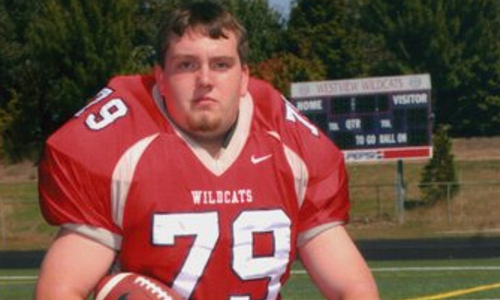
The day it happened was the same as any other day. I was cooking dinner. Jason asked me to call him when it was done and went up stairs to his room where I could hear the clanking of his weights, which was nothing unusual. I asked Duane to call Jason for dinner. He called and got no response so he went upstairs to his room. Next I heard him yell at me to “Call 911, Jason is having some kind of seizure.” The nightmare had started, the hell that we were going to be living had started. I kept thinking to myself, “He’s a young, strong kid. He hasn’t been sick at all. I know it’s serious, but he can pull through this.”
Let me tell you who Jason was. He could light up a room with just a smile. He could make you laugh no matter what mood you were in. He would keep after you until you did laugh. So many times I would be upset at him for something and he would keep pushing at me until I couldn’t help but laugh.
He was one of the most giving people, with what he had and of himself. If anyone asked him for help with anything, he was always there.
Jason has a sister, “Chris.” She is 12 years older than him. She always felt the need to protect him. Being her little brother she would always tease him and try to make him mad. The day came when he was taller and bigger than she was. She started with the teasing and he picked her up and tossed her onto the couch. The teasing stopped that day.
Jason and his dad, Duane loved Halloween. Every year, all those different costumes, never knowing what kind of weather they were going to be facing. It could be cold and raining, but that didn’t matter- out they went. What they would do for the all important “candy!”
Jason was always big for his age, but he had such a calm and quiet personality about him, unless he was on the football field all was different. People would always come up to us and ask us how could such a quiet, polite and respectful kid be such a beast on the field, we had no answer.
He tried other sports. He played basketball for a number of years, but when he first started football you could tell he loved it. Jason played for about eight years both offense and defense. He would come home with so many cuts and bruises on him from practice I was afraid to take him anywhere. I was afraid that people might think I was abusing him. They were his “war wounds” as he called them. As we were driving to his first high school game he would be playing under the lights, I remember him telling me, “Tonight I get to play under the lights, if after the game I die I would be complete and happy.”
The other thing he found he liked as much as football was lifting weights. It made him a better football player. His last couple of years of high school, if he wasn’t playing football he was in the weight room lifting weights.
After school was done and football was over, Jason seemed a little lost not knowing what he wanted to do with his life. A friend introduced him to an Army recruiter and, after talking to him, decided he wanted to join the Army. On February 22, 2010, the day Jason was supposed to sign the final paperwork, he passed away. We still don’t understand everything that happened. It also seemed like the doctors didn’t know what had happened.
The day it happened was the same as any other day. I was cooking dinner. Jason asked me to call him when it was done and went up stairs to his room where I could hear the clanking of his weights, which was nothing unusual. I asked Duane to call Jason for dinner. He called and got no response so he went upstairs to his room. Next I heard him yell at me to “call 911, Jason is having some kind of seizure.” The nightmare had started, the hell that we were going to be living had started. I kept thinking to myself, “he’s a young, strong kid. He hasn’t been sick at all. I know it’s serious, but he can pull through this.”
The next morning we found out the doctors wanted to have a discussion with us. Once everyone was there they came in and told us that the Jason we knew was gone, his body was being kept alive by machines. They ran numerous tests and they all came back showing no brain activity. All we could do was cry in disbelief, this should not be happening. Less than 24 hours ago he was standing in front of me talking to me. I thought, “this is my baby, he’s not supposed to go before me. He’s so young and had so many plans for his future.”
We returned to his room, knowing that we had to make a decision about keeping him alive with the machines or turning them off and letting him go. I have never made a more difficult decision in my life, but we needed to do what was best for Jason, so we decided to turn the machines off. He was given a shot for pain. The doctor explained it was given to all patients coming off life support to make sure they’re in no pain at all. I remember how quiet it was in his room. It wasn’t long after the shot was given that they started to back off on the machines until they were completely off. He was gone, I held on to him crying, asking him to open his eyes and come back to me. I’d lost my baby, my son. I didn’t know what to do next. I was completely lost.
The following day, Jason’s very first football coach and good friend came to the house (Jason had kept in touch with him for years after playing for him). He started to inform us about the Concussion Legacy Foundation and the work they do along with Boston University, the testing for brain injuries and trying to find ways to make sports safer to play. He explained to us that they had never had a donor of Jason’s age that had played football as long as he played—Jason always played a lineman, whether it was offense or defense, he was always a lineman. Being a lineman helmets would be crashing almost every play.
We always knew Jason wanted to be an organ donor, but because he had multiple organ failure, most of his major organs could not be used. We were saddened by this but we understood. When we were told about the institute and the work they do we knew right away that this would be something Jason would want. Any way he could help to make the game of football safer—the game he loved to play safer for kids and adults—he would jump at the chance.
Memories…you have good ones and you have bad ones. You find that you remember the good and the bad just float away. You take all the good memories and lock them away in your heart, because that’s all you have left.
Jason touched so many lives and had so many friends. I know we only had him for 19 years, but I thank God every day we had those.
As parents we spend years trying to teach our children the right values in life. You know how they are at home, but how are they are outside the home? We were always told over and over about how polite and caring he was to others, and always so respectful. We know we had one of the best sons anyone could ever ask for. We will always be proud to say we are Jason’s parents.
Being his mom I will sit alone and talk to him knowing he hears me feeling the love in my heart staying strong and growing with every conversation.
He will always have a special part of my heart forever.
We love you for all time,
Mom and Dad
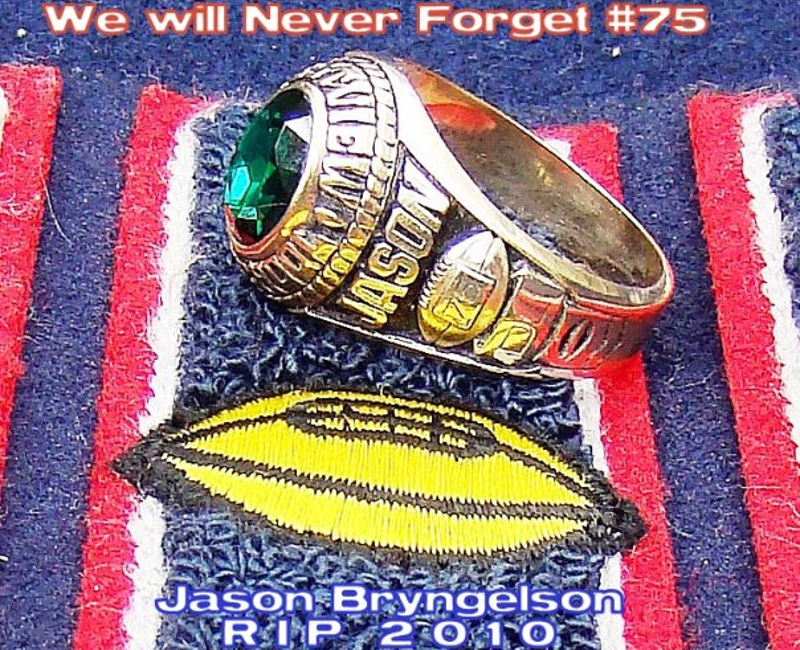
Barrett Callaghan

Son, brother, loyal friend, athlete. Barrett Callaghan had many titles and lived his life with love and compassion for those around him.

Barrett loved sports and was an incredible athlete from an early age; his family even calls him “sports obsessed.” Sports were his life, and he was interested in many of them: baseball, football, basketball, and golf. His level of sports knowledge was unmatched, and he was an athlete for years.
Barrett played baseball from the age of five through the end of high school and he played on his high school’s basketball team during his freshman year. Golf was also a favorite of his and he accomplished his goal of a “hole in one” the year before he passed.
One of Barrett’s favorite sports was football and he fell in love with it at a very early age. As a kindergartner, he watched his older brother play and begged his parents to find a team for him so he could start in first grade. At the age of seven, his football career was launched. Being one of the smaller boys on the team, he quickly discovered using his head was his biggest asset. He played football through high school, where he was a standout player and teammate.
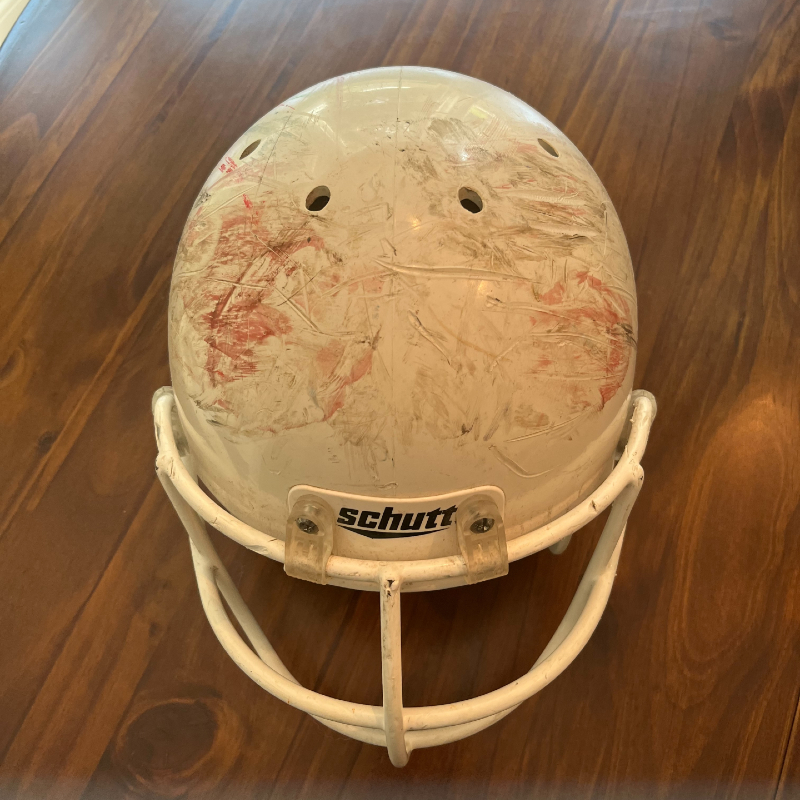
Besides athletics, Barrett, affectionately known as “Bear” and “Bearbo,” was known for his big heart. His love for his family was indescribable and he truly enjoyed gatherings, holidays, and vacations and attending Chicago White Sox games together. His family described his motto as “When in Need, I’m There.” Barrett was the kind of person that protected underdogs and always stood up for anyone in need. He was a loyal friend who always had the back of anyone he knew.
As time went on, his family noticed changes in his demeanor. He had mood swings and moments where he was out of character. His temper was quick and his sleep schedule was very erratic. It didn’t take long to notice that what was happening to him was out of his control.
Barrett struggled with his mental state for years. He went away to college for a couple of years but couldn’t finish. Coming home and attending a local college was his next step.
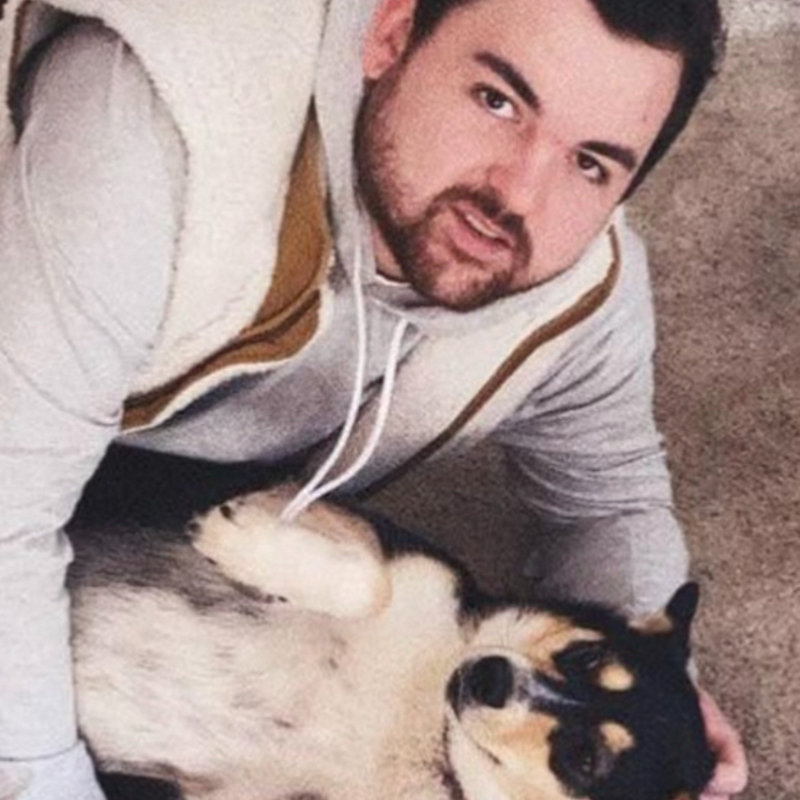
These changes scared Barrett and he often was embarrassed and remorseful for things he had said or done. His mother recalled a conversation where he begged her, saying, “Mom, please make it stop.” His desperation to figure out what was going on in his brain led him to discover for himself what he was battling. Barrett suspected he may have CTE, and his mother had thought the same.
Barrett passed away on September 26, 2021, in a car accident when a wrong-way driver hit him head on. He was 25 years old at the time and only 10 days shy of turning 26.
Barrett’s family, parents Rich and Jan, and siblings Richie, Mary Caroline, and Catie, donated his brain to the VA-BU-CLF Brain Bank, where he was diagnosed with stage 1 CTE by researchers. His diagnosis was not a surprise and the symptoms he experienced are common among individuals suffering from CTE. His mother said the disease robbed him of his education, ability to hold a full-time job, and his independence.
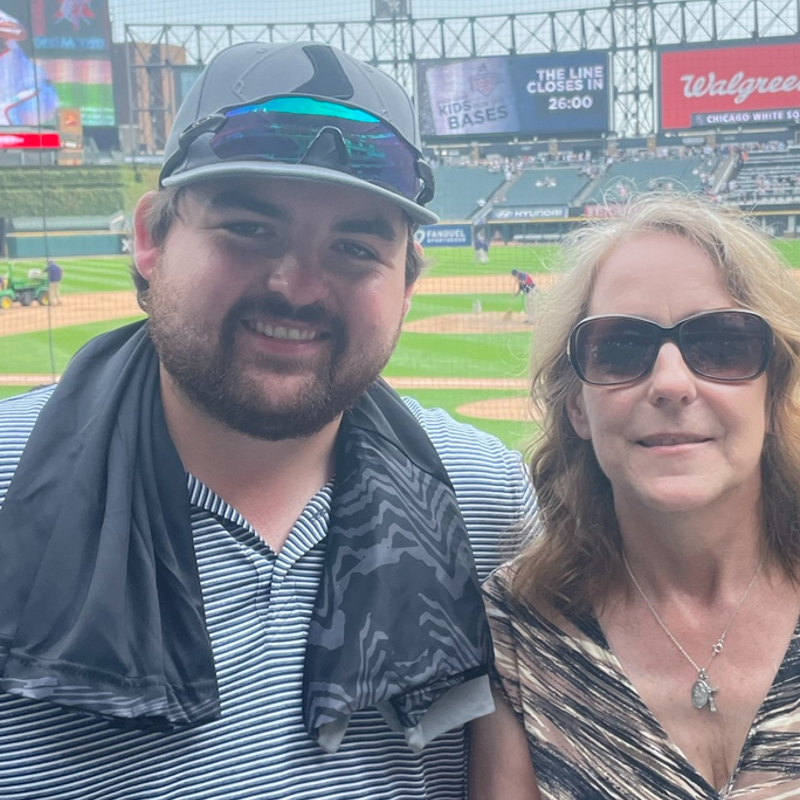
Even as Barrett’s personality changed, his family recalled that his heart stayed the same and his compassion and love for those around him never wavered. One of his last gifts was to his Aunt Julie. She celebrated her birthday over Labor Day weekend while still recovering from a recent major surgery. Though big outings were still a little overwhelming for her, Barrett insisted they go to a White Sox game together and she agreed. The game did not disappoint, and she said Barrett was the only one who could have convinced her to go. In his final days, Barrett’s profound love was a reminder to his Aunt Julie to always live life to the fullest, just as he always did.
Barrett once said, “In life, I don’t care to make money, I want to make a difference.” That was something he achieved in his lifetime and will continue to do so: his brain donation will contribute to numerous research studies with the goal of identifying CTE in living persons and eventually finding a cure. His story and legacy will continue to live on and impact current and future athletes for generations to come.
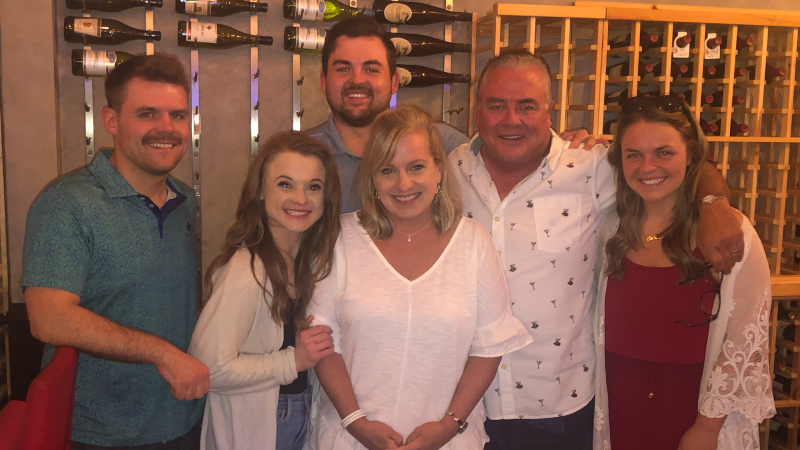
Joseph Chernach

Joseph Chernach traveled to his next journey on June 6, 2012. With his Forest Park Trojan and Green Bay Packer jerseys, his difficulties and struggles with depression finally came to end at the age of 25.
Joseph was a competitive and talented athlete from an early age, playing summer baseball, wrestling since the age of six and throughout high school, a pole vaulter in track, and pop-warner, JV and Varsity football in high school. He won many medals and trophies from grade school through high school.
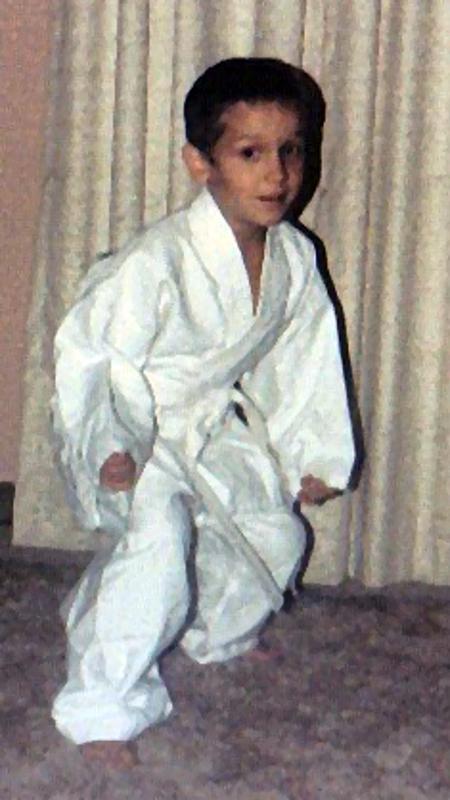
He was the Michigan High School Upper Peninsula pole vault champion, Michigan High School state wrestling champion, named all U.P class D defensive back, all State class D defensive back, MVP of football along with senior athlete. He was proud to play in the Michigan High school state football finals in 2004 with the Forest Park Trojans.
His greatest accomplishment was graduating with high honors from Forest Park High School in 2005.
He also attended Central Michigan University in Mt. Pleasant, Michigan with plans to graduate with a degree in Physical Therapy.
Joseph was baptized at the Northfield Lutheran Church, Hixton, WI, and confirmed at the United Christ Methodist Church in Crystal Falls, MI. His Facebook page reflects his religious views as “God Loves Me.”
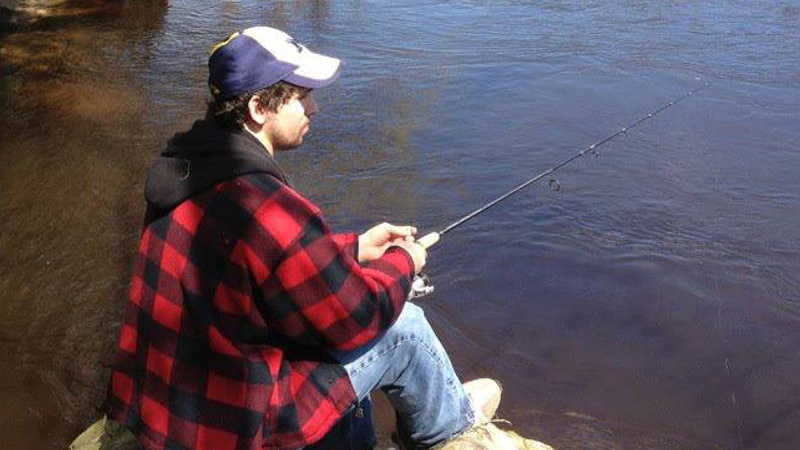
Joseph was fun, active and lived for making people laugh and his sense of humor touched many. He was a fan of the Michigan Wolverines, Milwaukee Brewers and Green Bay Packers. He loved to fish and deer hunt in Wisconsin on the family farm.
Joseph leaves behind many family and friends, father Jeffrey Chernach, mother Debra (Fred) Pyka, brothers Tyler (Michelle) and Seth, sister Nicole, step-sister Samantha, Grandmother Lolly, nieces Braylee and Layla and the Forest Park Class of 2005.
A yearly scholarship has been set-up in his memory.
Joseph Chernach Memorial Scholarship
Forest Park High School
801 Forest Parkway
Crystal Falls, MI 49920
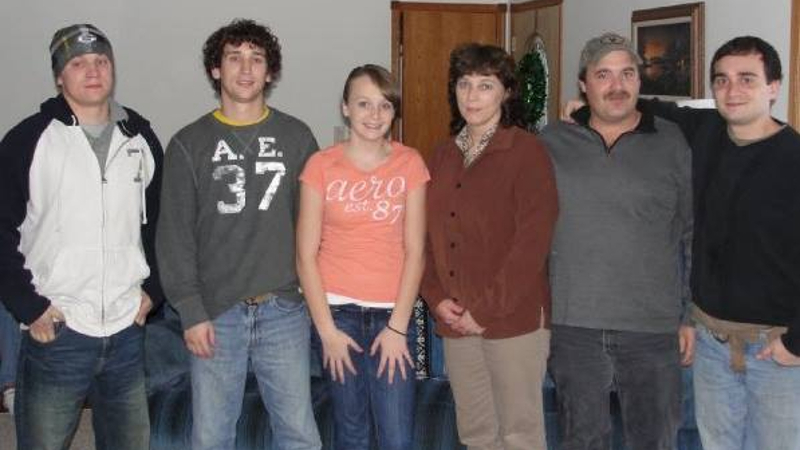
In Joseph’s final few years, he suffered with depression and unable to overcome all the struggles and difficulties with life. CTE was destroying his brain until he could no longer go on with life here. Looking at his headstone in the cemetery is very heartbreaking knowing he is gone. We will never see him graduate college, marry, become a father, and live a happy, healthy and successful life.
We will always wonder what he would have accomplished in his lifetime and we know he will be waiting to see us all again, until that time comes, we are left with the devastation of losing him and living our lives without him. We are all grateful for having him in our lives for almost 26 years. Until we meet again, our love goes with you and our souls wait to join you.
For almost 20 years, the NFL covered up and denied evidence to the connection between brain damage and football. How many people have died from this brain disease whose families are unaware? How much progress could have been made for research, a cure, and the safety and health of everyone had this evidence been made public 20 years ago?
I have contacted the news media, local congressman, senator, representative, the National Federation of High schools and the White House with my son’s story and concerns with sports, head trauma and CTE. The safety and health of our children are at risk. I hope someone will finally listen.
We love you and miss you Joseph and we’ll all be together again one day soon.
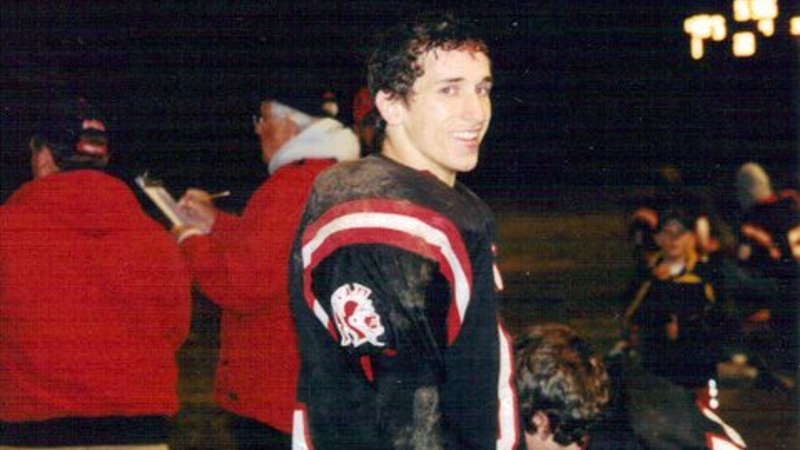
We are grateful to the Concussion Legacy Foundation for the research and diagnosis to finally give us the answers to what caused Joseph’s depression and early death. Joseph never played college or pro-sports and we do not know of any concussions during his middle or high school years. This is the report we received from Dr. Ann McKee at the BU CTE Center in December 2013:
“Fixed tissue samples were received from Sacred Heart Pathology Department, Eau Claire, Wisconsin on 9/6/12. There were no obvious abnormalities. However, microscopic analysis of the tissue revealed considerable pathological tau deposits as neurofibrillary tangles throughout the frontal brain regions. There were also very severe changes in the brainstem, with numerous tau neurofibrillary tangles in the locus coeruleus, an area of the brain thought to play a role in mood regulation and depression. The changes in the frontal lobes and locus coeruleus were the most severe I’ve seen in a person this age. These findings indicate Stage II, possibly Stage III (with Stage IV being most severe) CTE and are particularly noteworthy, given the young age of the subject.”
Read more about Joseph and his story from his parents and BuzzFeed News.